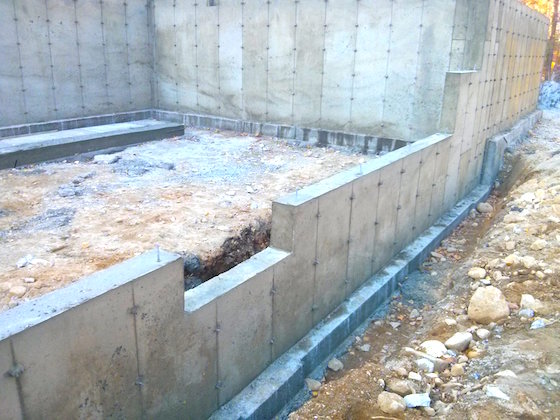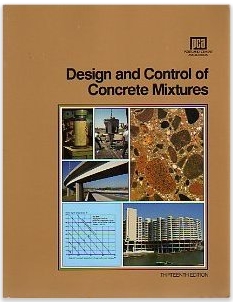Poured Concrete Walls vs. Concrete Block

Here are some great cast concrete, formal term for poured walls, foundation walls that were formed and poured in ONE DAY just down the street from where I live. You'd NEVER build block walls that fast. (C) Copyright 2016 Tim Carter
Poured Concrete vs Block Wall TIPS Just Below
FAST TIPS for Poured vs Block Walls:
- Block walls can be as strong or stronger than poured walls
- Block and concrete are strong in compression, but weak in tension
- Reinforcing steel needs to be in block walls - both vertical and horizontal
- Block cores must be filled with pea-gravel concrete
- Poured, or cast, walls must have horizontal steel top and bottom
CLICK HERE to get FREE & FAST BIDS for foundations walls for your new home.
DEAR TIM: I am getting ready to construct a new home with a full basement. I am convinced that poured concrete walls are stronger than concrete block walls. However, a friend of mine has told me that there is no difference. My contractor has indicated that there are many factors that control overall strength in each type of wall. Can you shed any light on the subject? J. D.
DEAR J. D.: First of all, I can tell you that your contractor is quite right in his statement. There are many variables which control overall strength of masonry or poured concrete basement foundation walls. Design strength of the concrete, concrete blocks, and mortar are very important. The thickness of the wall with regard to its height is also extremely important.
For the most part, each type of wall has two categories, reinforced and non-reinforced. A reinforced wall, either poured concrete or concrete block, always contains some form of reinforcing steel. The presence of reinforcing steel dramatically increases the overall strength characteristics of masonry or concrete.
However, let's compare two 8 inch thick walls. One will be poured concrete, while the other one will be standard 8 inch hollow core block. There are two forces which act primarily upon foundation walls. The one force is a downward force (gravity load) created by the load placed upon the wall. The other force is a sideways or lateral force caused by the backfill or earth which is placed against the wall.
The strength of concrete is often measured in pounds per square inch. This is a measure of the weight that it will support before fracturing. You can apply these same standards to concrete blocks and mortar. Let's assume that each of the test walls have the same strength. The strength of each wall is directly proportional to its cross sectional area. In our example, a standard concrete block wall may only be half as strong as the poured concrete wall when a gravity load is applied to it. This is due to the hollow voids within the wall.
When you apply a lateral load to these two walls, you will achieve similar results. The poured concrete wall has more mass or interlocking cement paste crystals to resist the cracking force. The hollow block wall is depending solely on the strength of the thin mortar bed between each concrete block.
The addition of reinforcing steel to either wall system complicates the issue. For example, you can make a concrete block wall stronger than a poured concrete wall, by simply adding some reinforcing steel and additional mortar to the block wall. The trick is to insert vertical steel rods from top to bottom in the hollow cores and fill those hollow cores to the top with mortar. The addition of thin wire truss reinforcing steel in between the layers of block will add even more strength. This block wall would be far stronger than a similar non-reinforced concrete wall.
CLICK HERE to get FREE & FAST BIDS for foundations walls for your new home.
Your best bet, in my opinion, is to install a steel reinforced poured concrete wall. Have your foundation contractor install two 5/8 inch horizontal reinforcing bars about 16 inches from the bottom and top of the wall. These bars will minimize cracking if your soil beneath the footer rises or falls.
Consider installing singular vertical bars approximately two inches away from the inside face of the foundation wall every two feet on center. These bars will help withstand the bending force caused by the backfill dirt.
Remember, you only get one chance to install reinforcing steel. Spend the extra money and your foundation will not let you down.
If you want to learn lots about how concrete should be installed, you must buy a copy of a neat paperback book published by the Portland Cement Association. It is titled Design and Control of Concrete Mixtures. This book is a little technical, but it has many very important facts and guidelines that will help you order and place concrete under all sorts of site and weather conditions.
The Portland Cement Association has another book called The Homeowners Guide to Working With Concrete, Brick and Stone. This swell book contains some great photos, illustrations and numerous tables. It educates you about how to order and work with concrete. The book also shows you how to install brick and stone. It is a must have! To buy it now, just click it.
Column 046

14 Responses to Poured Concrete Walls vs. Concrete Block